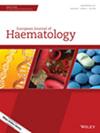Maternal and Fetal Outcomes of Aplastic Anemia During Pregnancy and Delivery: Systematic Review and Meta-Analysis
Abstract
Background
Little scientific evidence exists on maternal and fetal outcomes in aplastic anemia (AA) during pregnancy.
Aim
The review was conducted to assess the maternal and fetal outcomes due to AA during pregnancy.
Data Sources
Web of Science, EMBASE, PubMed, Scopus, Cochrane CENTRAL, and registries until May 5, 2024.
Study Eligibility Criteria
Studies (prospective, retrospective cohort, cross-sectional, one arm, survey, follow-up studies) evaluating AA during pregnancy were searched as per PROSPERO registered protocol (CRD42024506668). Case reports, case series, expert opinion letters, and studies assessing less than or equal to 10 pregnant women were not considered. The primary outcome was the prevalence of preeclampsia in AA pregnancies. The secondary outcomes included spontaneous abortion, preterm premature rupture of membranes, premature rupture of membranes, fetal growth restriction, type of delivery, intrauterine fetal death, maternal and neonatal mortality, and pre and post-pregnancy remission status comparison.
Methods
The quality of research was checked using the New Castle-Ottawa risk-of-bias tool. A meta-analysis model with a random effect distribution, coupled with meta-regression, sensitivity analysis, and publication bias assessment, was used in the statistical software R. Standard Equator network study reporting guidelines were followed.
Results
Seven (one prospective and six retrospective cohort) studies included patients with confirmed AA diagnosis in 248 pregnancies. The pooled prevalence of preeclampsia was 13% (95% CI, 8%–20%). Heterogeneity was low in the present meta-analysis (I 2 = 26%). The secondary outcome evaluation showed a pooled prevalence of 5% (95% CI, 3%–11%) for spontaneous abortion, 4% (95% CI, 1%–11%) for preterm premature rupture of membranes, 10% (95% CI, 3%–28%) for premature rupture of membranes, 6% (95% CI, 3%–11%) for fetal growth restriction, 5% (95% CI, 2%–13%) for intrauterine fetal death, 12% (95% CI, 5%–26%) for post-partum hemorrhage, 74% (95% CI, 45%–91%) for intrapartum transfusion requirement, and 55% (95% CI, 27%–80%) for the cesarean delivery opting. The maternal mortality in pregnancies with AA was 4% (95% CI, 0.01–0.14), whereas neonatal mortality was 7% (95% CI, 0.03–0.18). The odds of AA complete remission were better in pre-pregnancy than post-pregnancy (OR = 0.36; 95% CI = 0.08–1.66), although the results remain insignificant. The leave-one-out sensitivity analysis did not change the pooled estimates for the primary outcome.
Conclusion
A risk of developing preeclampsia was observed in every eighth pregnant woman with an AA diagnosis. AA remission status might worsen after undergoing pregnancy, considering the significant obstetric morbidity and mortality burden.


 求助内容:
求助内容: 应助结果提醒方式:
应助结果提醒方式:


